Abstract
Diel variations in N2 fixation (acetylene reduction), CO2 fixation, and oxygen concentrations were measured, on three separate occasions, in a marine microbial mat located on Shackleford Banks, North Carolina. Nitrogenase activity (NA) was found to be inversely correlated with CO2 fixation and, in two of the three diel periods studied, was higher at night than during the day. Oxygen concentrations within the top 3 mm of the mat ranged from 0 to 400 μM on a diel cycle; anaerobic conditions generally persisted below 4 mm. NA in the mat was profoundly affected by naturally occurring oxygen concentrations. Experimentally elevated oxygen concentrations resulted in a significant depression of NA, whereas the addition of the Photosystem II inhibitor 3(3,4-dichlorophenyl)-1,1-dimethylurea decreased oxygen concentrations within the mat and resulted in a significant short-term enhancement of NA. Mat N2-fixing microorganisms include cyanobacteria and heterotrophic, photoautotrophic, and chemolithotrophic eubacteria. Measured (whole-mat) NA is probably due to a combination of the NA of each of these groups of organisms. The relative contributions of each group to whole-mat NA probably varied during diel and seasonal (successional) cycles. Reduced compounds derived from photosynthetic CO2 fixation appeared to be an important source of energy for NA during the day, whereas heterotrophic or chemolithotrophic utilization of reduced compounds appeared to be an important source of energy for NA at night, under reduced ambient oxygen concentrations. Previous estimates of N2 fixation calculated on the basis of daytime measurements may have seriously underestimated diel and seasonal nitrogen inputs in mat systems.
Full text
PDF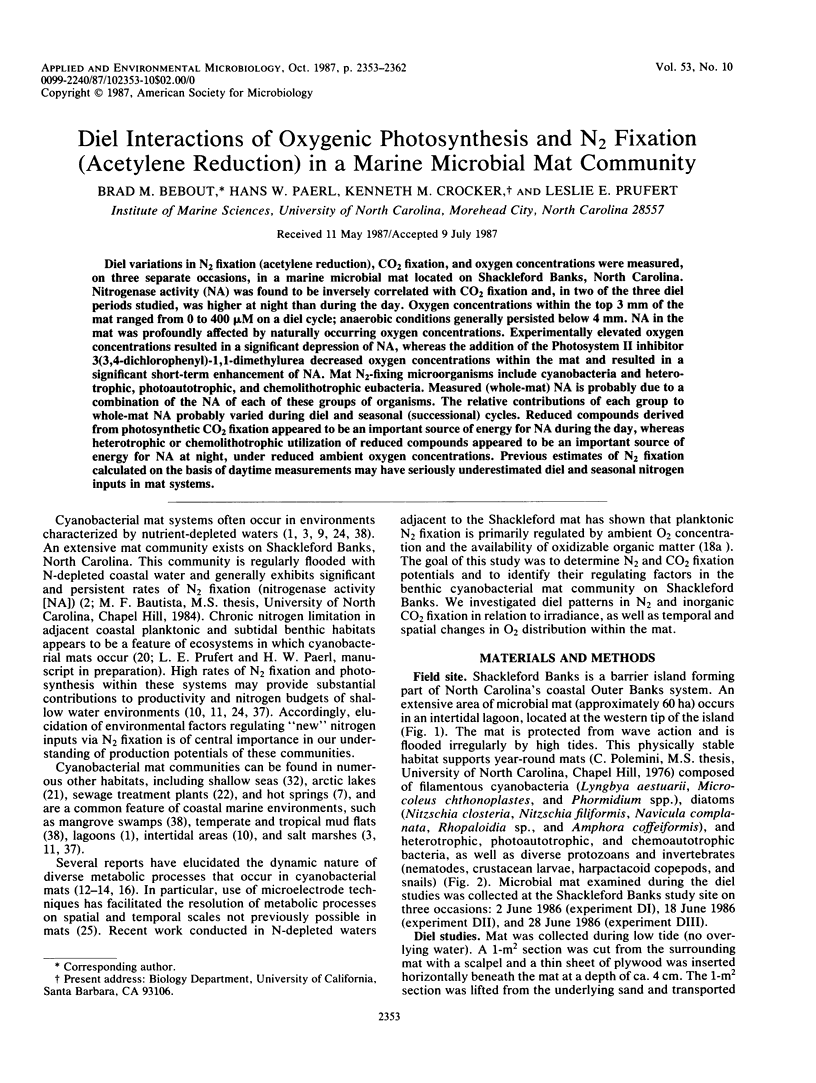
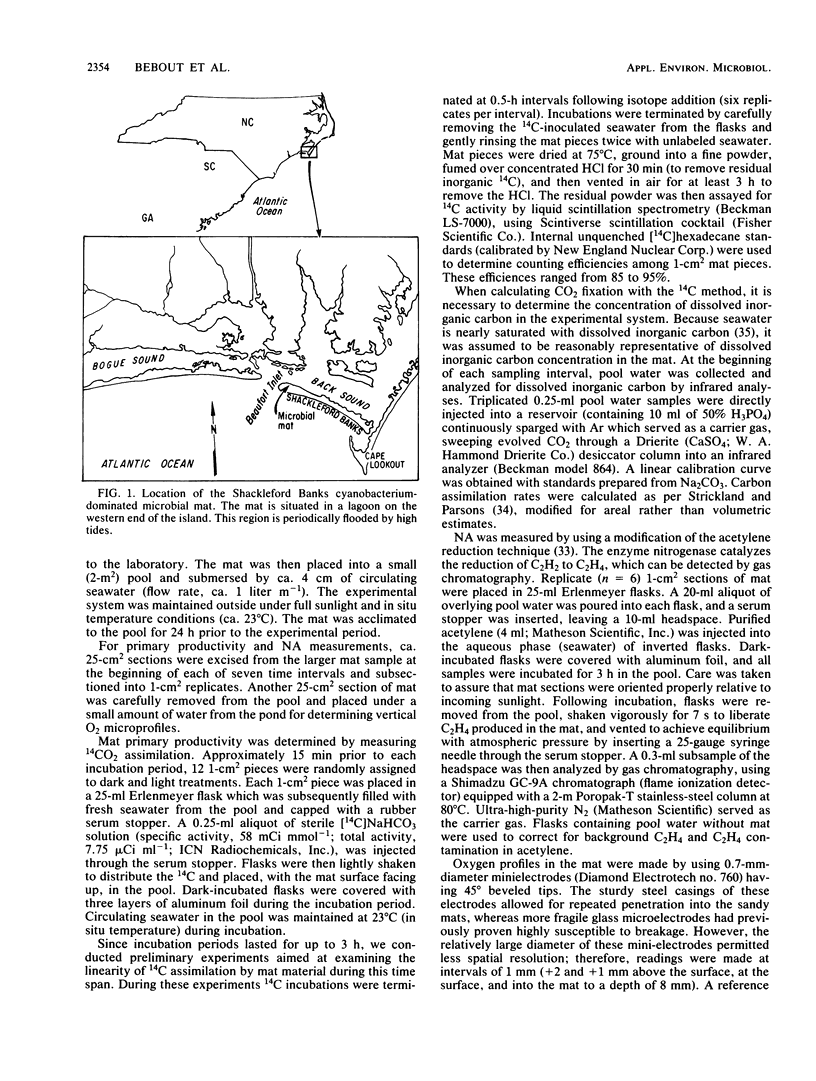
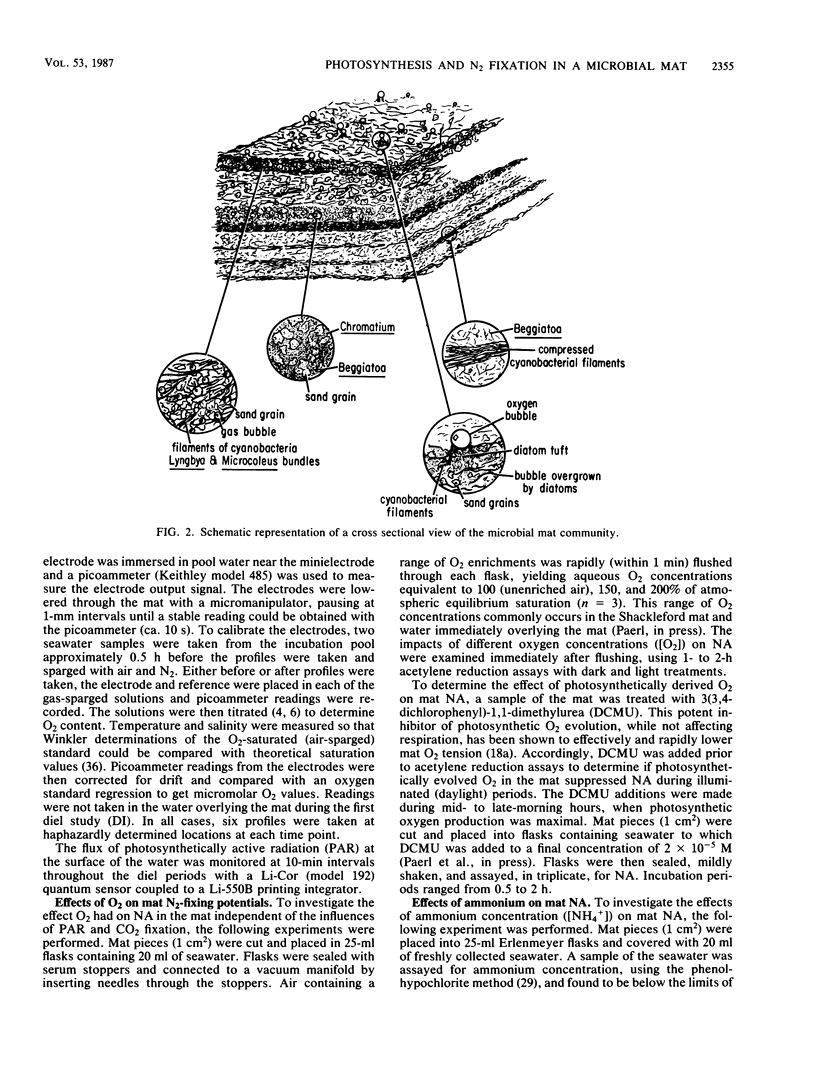
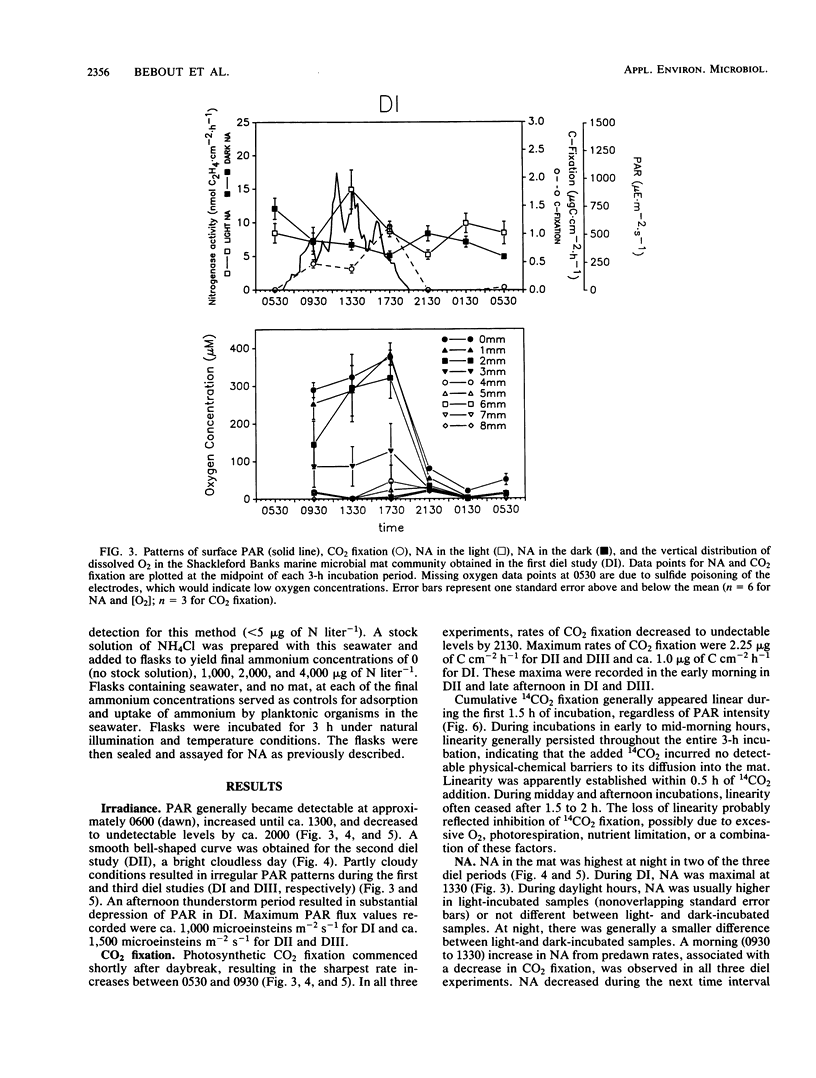
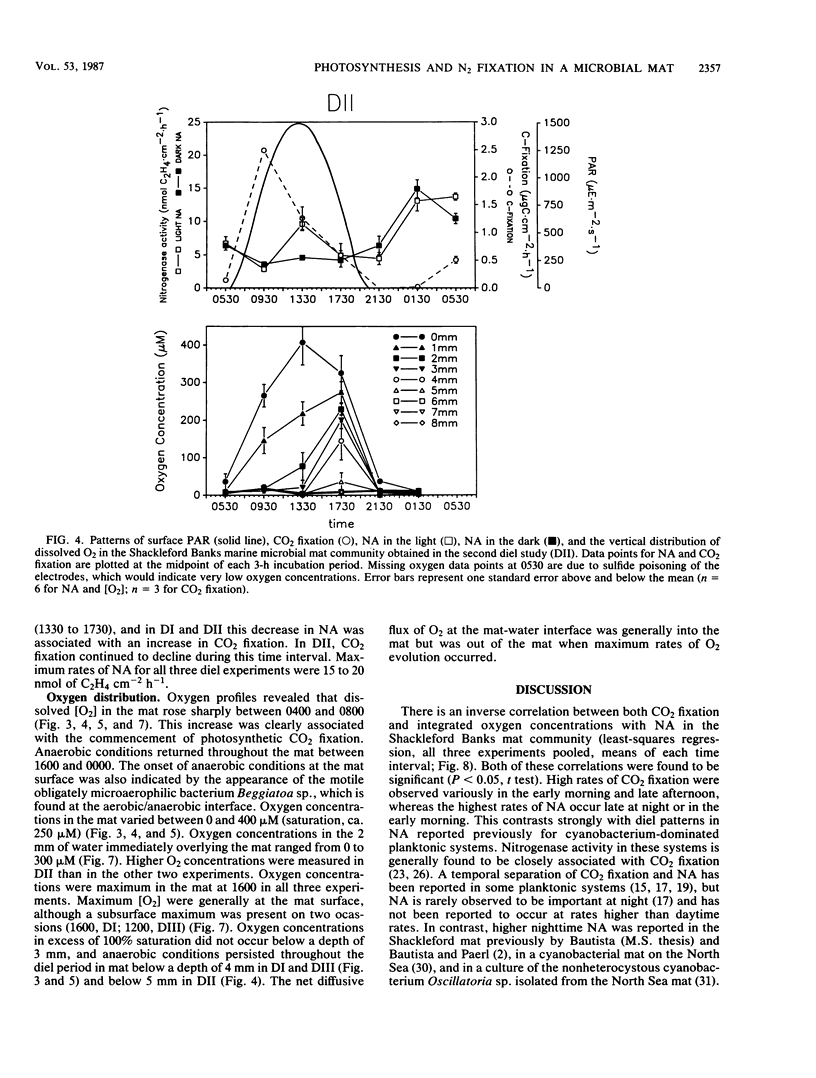
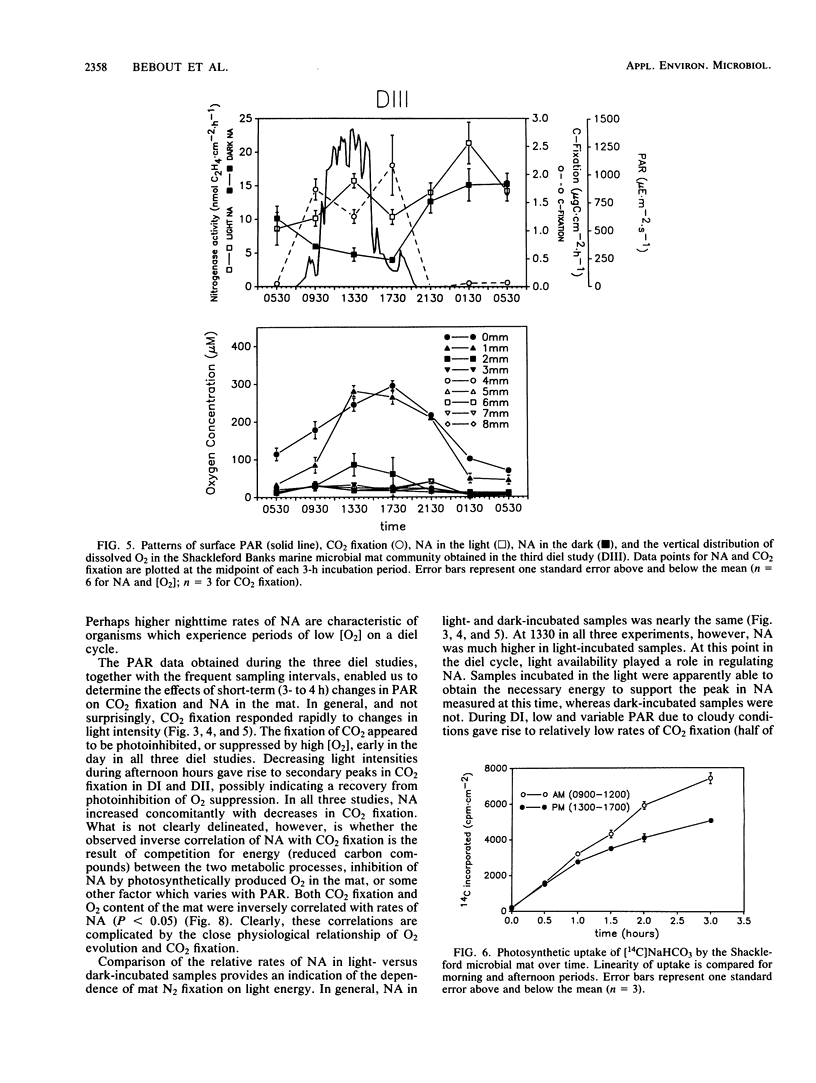
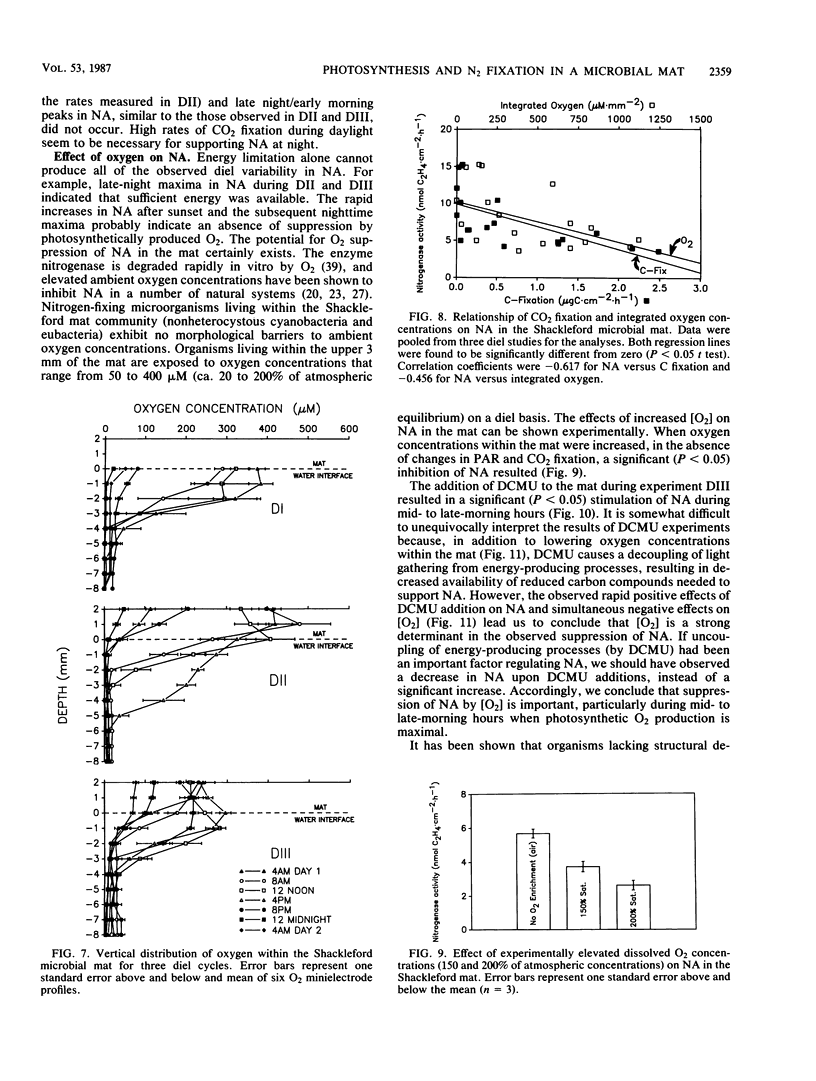
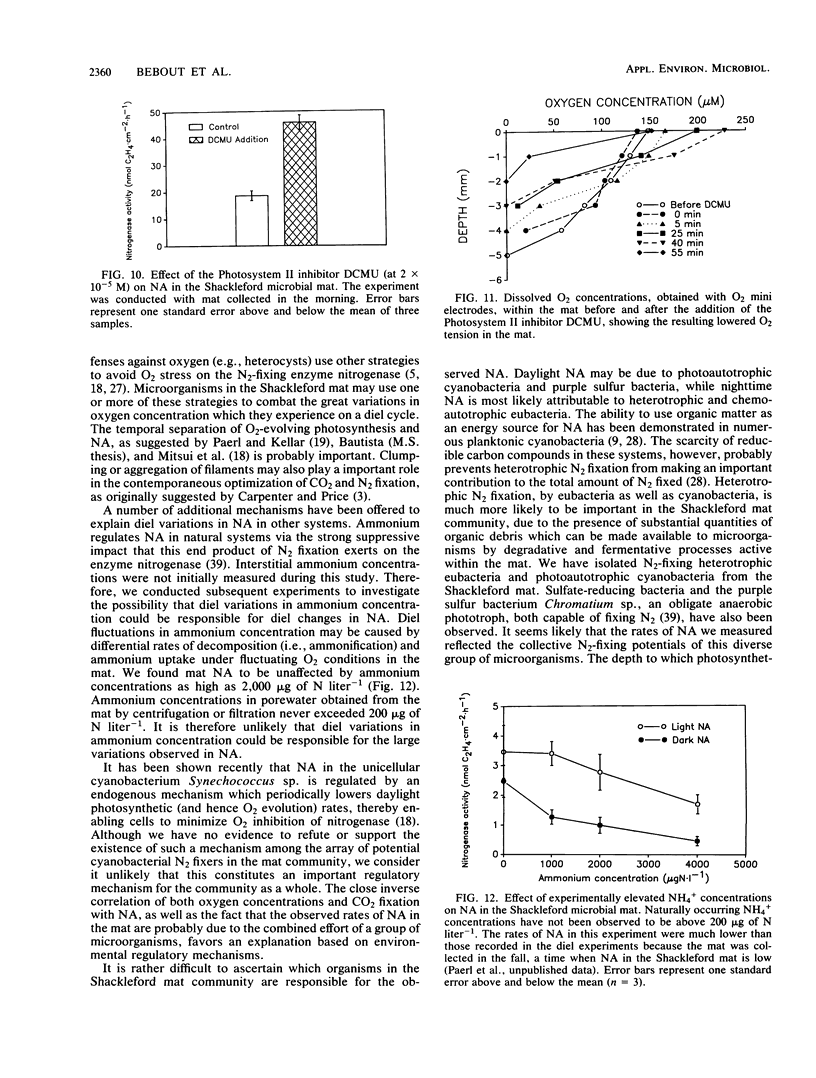
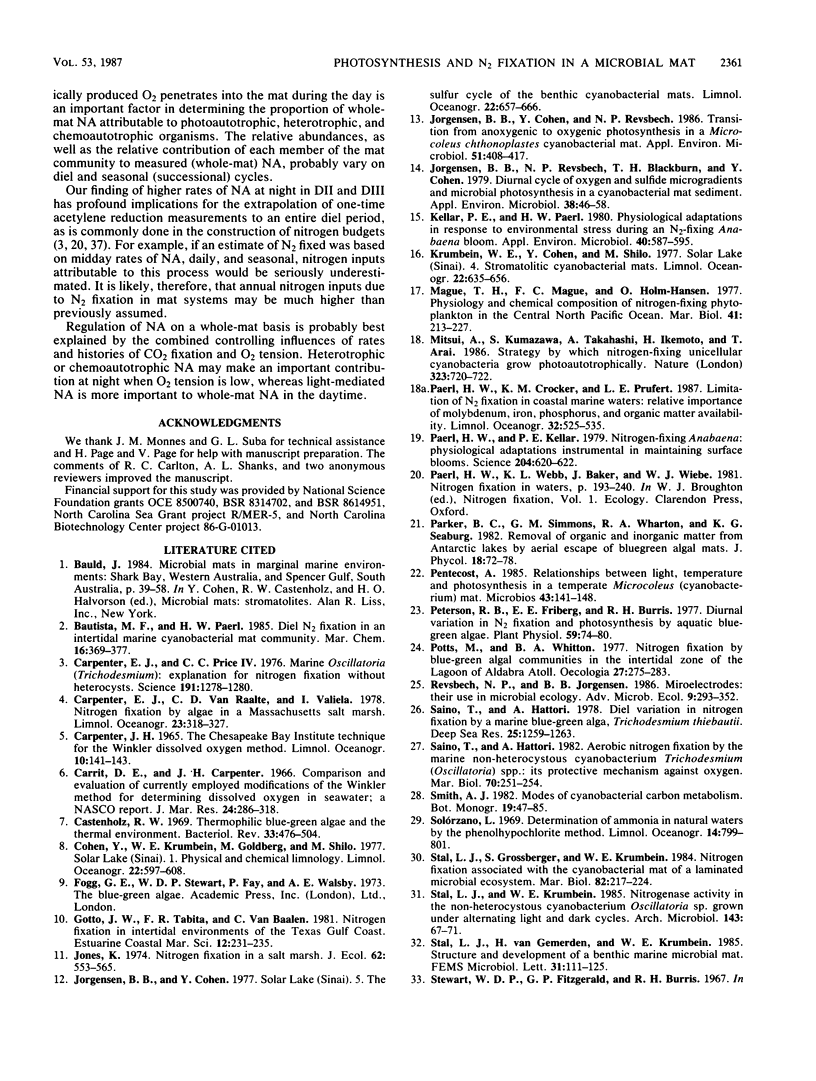

Selected References
These references are in PubMed. This may not be the complete list of references from this article.
- Carpenter E. J., Price C. C. Marine oscillatoria (Trichodesmium): explanation for aerobic nitrogen fixation without heterocysts. Science. 1976 Mar 26;191(4233):1278–1280. doi: 10.1126/science.1257749. [DOI] [PubMed] [Google Scholar]
- Castenholz R. W. Thermophilic blue-green algae and the thermal environment. Bacteriol Rev. 1969 Dec;33(4):476–504. doi: 10.1128/br.33.4.476-504.1969. [DOI] [PMC free article] [PubMed] [Google Scholar]
- Jørgensen B. B., Cohen Y., Revsbech N. P. Transition from Anoxygenic to Oxygenic Photosynthesis in a Microcoleus chthonoplastes Cyanobacterial Mat. Appl Environ Microbiol. 1986 Feb;51(2):408–417. doi: 10.1128/aem.51.2.408-417.1986. [DOI] [PMC free article] [PubMed] [Google Scholar]
- Jørgensen B. B., Revsbech N. P., Blackburn T. H., Cohen Y. Diurnal cycle of oxygen and sulfide microgradients and microbial photosynthesis in a cyanobacterial mat sediment. Appl Environ Microbiol. 1979 Jul;38(1):46–58. doi: 10.1128/aem.38.1.46-58.1979. [DOI] [PMC free article] [PubMed] [Google Scholar]
- Kellar P. E., Paerl H. W. Physiological adaptations in response to environmental stress during an n(2)-fixing anabaena bloom. Appl Environ Microbiol. 1980 Sep;40(3):587–595. doi: 10.1128/aem.40.3.587-595.1980. [DOI] [PMC free article] [PubMed] [Google Scholar]
- Paerl H. W., Kellar P. E. Nitrogen-fixing anabaena: physiological adaptations instrumental in maintaining surface blooms. Science. 1979 May 11;204(4393):620–622. doi: 10.1126/science.204.4393.620. [DOI] [PubMed] [Google Scholar]
- Peterson R. B., Friberg E. E., Burris R. H. Diurnal variation in n(2) fixation and photosynthesis by aquatic blue-green algae. Plant Physiol. 1977 Jan;59(1):74–80. doi: 10.1104/pp.59.1.74. [DOI] [PMC free article] [PubMed] [Google Scholar]


